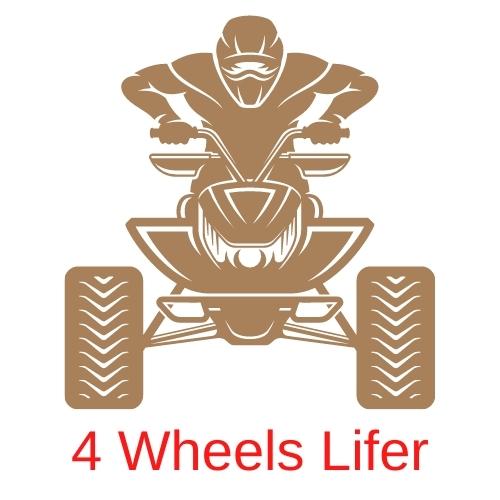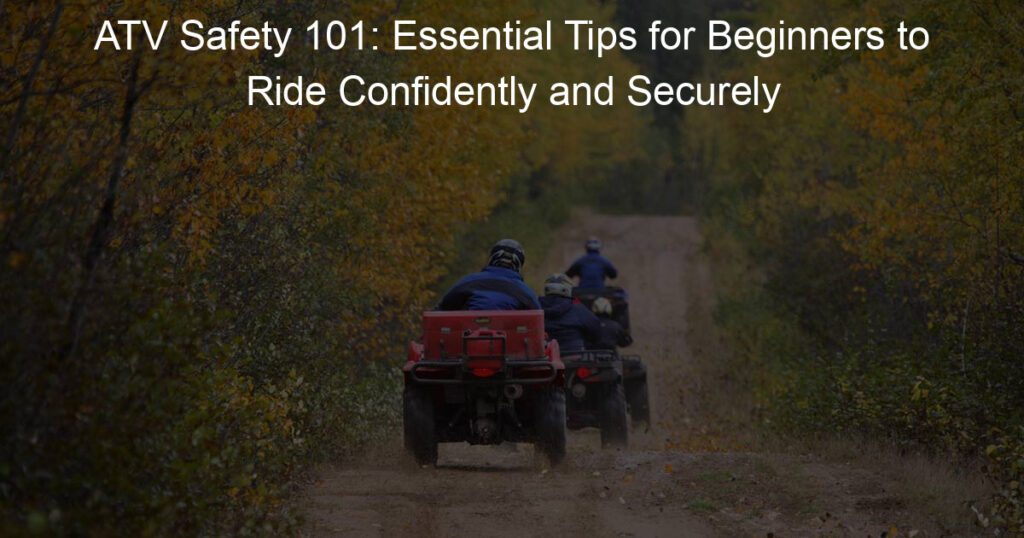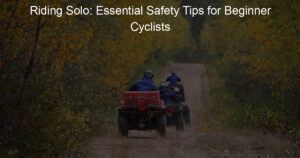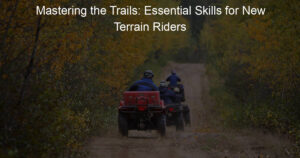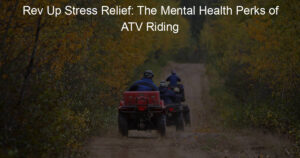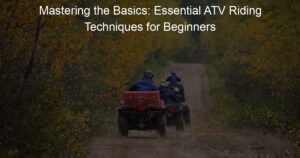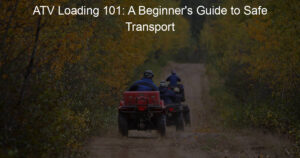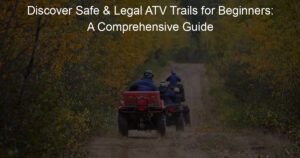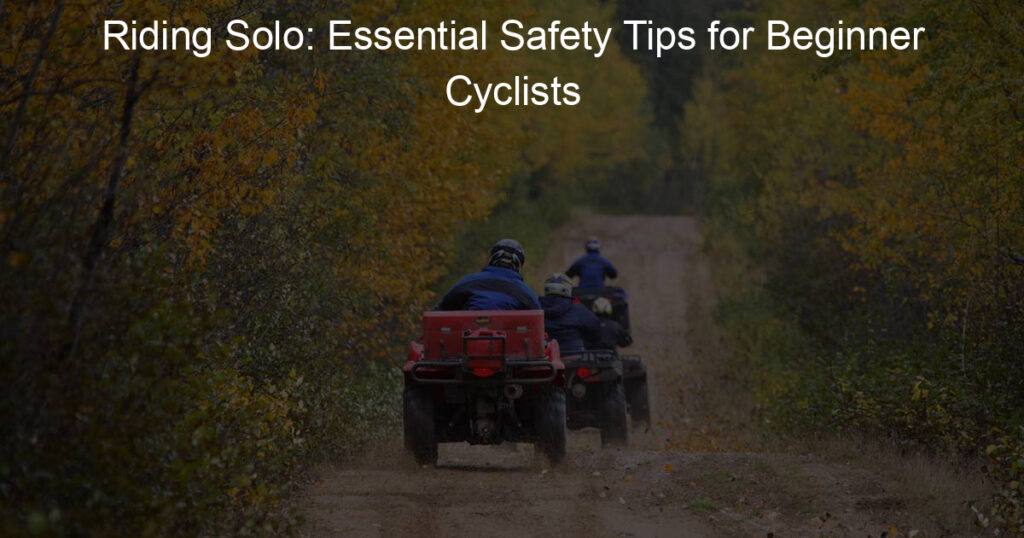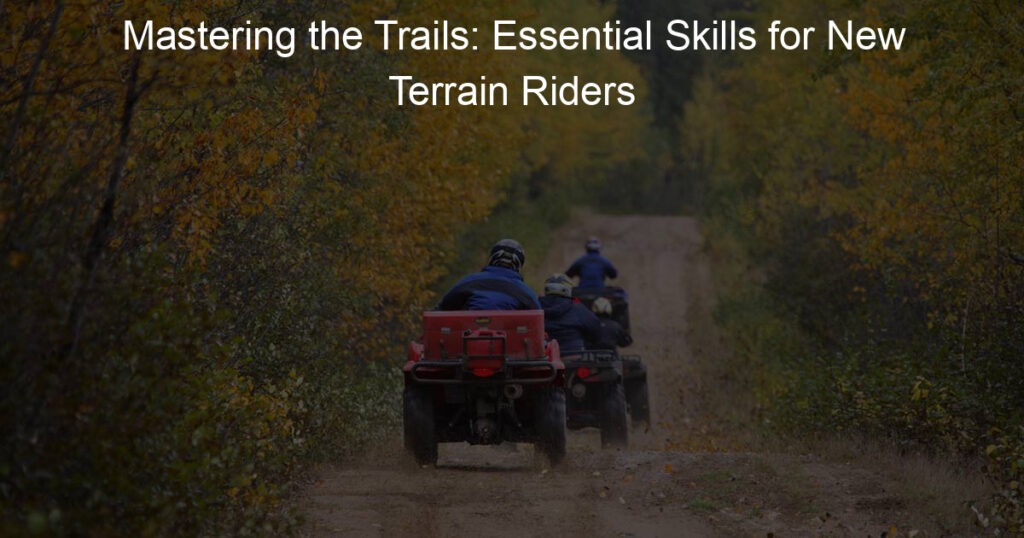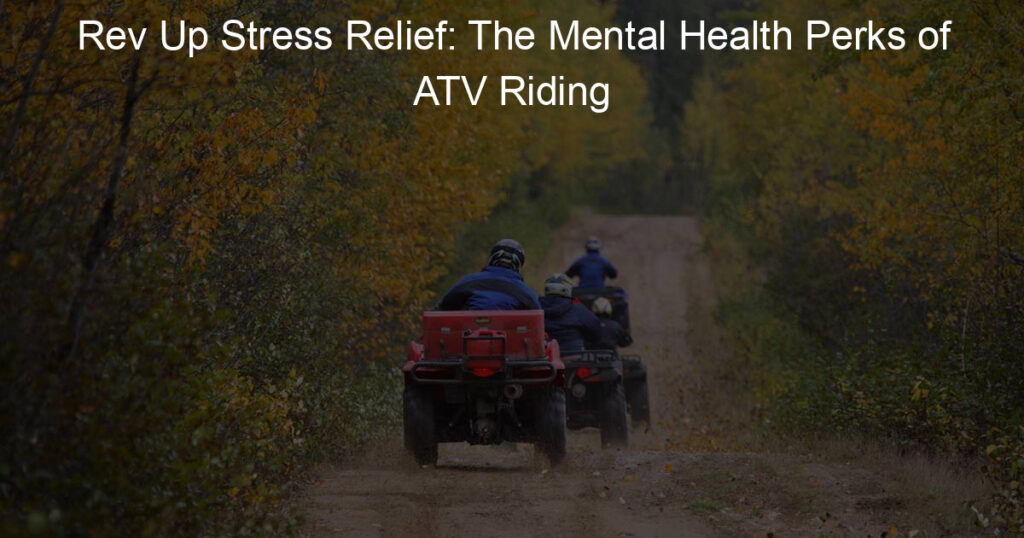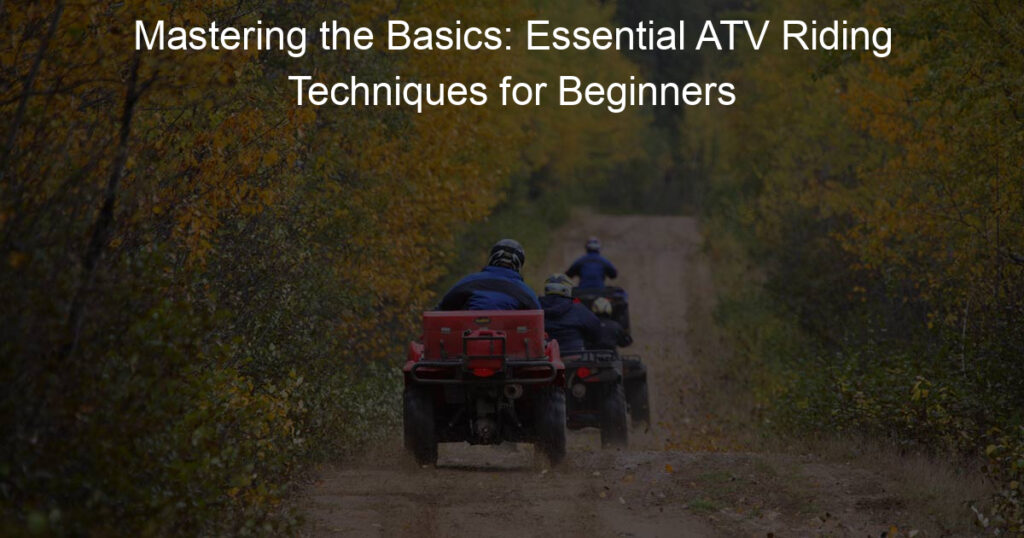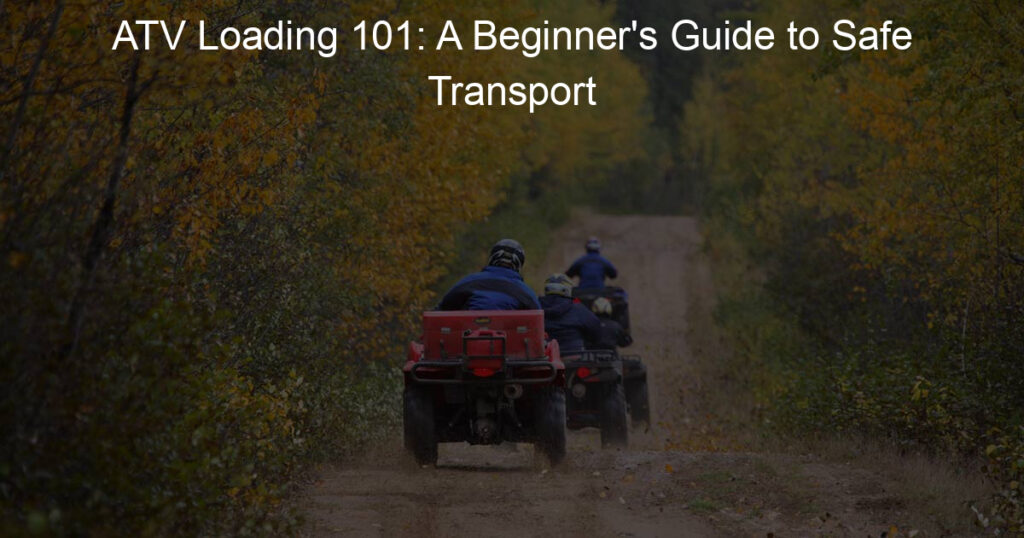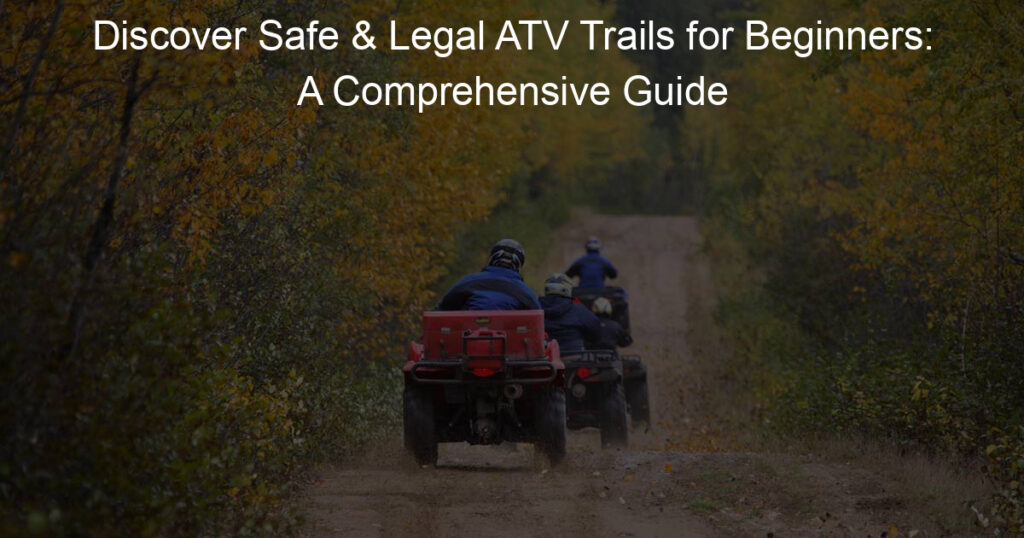ATV riding is an exhilarating outdoor activity that offers both adventure and excitement. While it can be a great way to explore the outdoors, safety should always be a top priority for any beginner.
As a novice rider, getting to know ATV Safety 101. Safety plays a crucial role in ensuring a fun and safe experience.
It is vital for beginners to familiarize themselves with the different types of ATVs, their capabilities, and the necessary precautions for each terrain.
Additionally, understanding the importance of proper gear, regular maintenance, and safe riding practices will go a long way in preventing accidents and injuries.
Key Takeaways
- Equip yourself with knowledge of ATVs and their safety features.
- Investing in the right gear and maintaining your ATV is critical.
- Awareness of safe riding practices and legal considerations is essential.
ATV Safety 101 – Here We Go

As a beginner, it’s essential to understand what an ATV (all-terrain vehicle) is and how it differs from other off-road vehicles. Also known as a four-wheeler, an ATV is a motorized vehicle with four low-pressure tires and a seat that you straddle, much like a motorcycle.
Its design enables you to traverse a wide range of terrains, making it popular for outdoor enthusiasts.
ATVs come in various shapes and sizes. First, you have recreational ATVs, which are generally smaller and less powerful. These are excellent choices for casual riders who want to enjoy off-roading without the need for advanced skills.
Then, you have utility ATVs, which are more powerful and designed for heavy-duty tasks. These vehicles can haul cargo, tow trailers, and even plow snow.
Finally, there are sport ATVs, known for their speed and performance, perfect for those looking to race or push their riding abilities to the limits.
Safety is crucial when riding an ATV. Before hopping on one, I make sure to wear proper safety gear, such as a helmet, eye protection, gloves, and sturdy boots. It’s also essential to familiarize yourself with the ATV’s controls and practice safe riding techniques. Some useful tips to remember include:
- Always ride at a safe speed. This not only protects me but also helps me maintain control in varying conditions.
- Keep both hands on the handlebars and both feet on the footrests at all times. This ensures proper balance and control.
- Shift your weight accordingly. Leaning into turns and shifting weight to the front or back when ascending or descending hills helps maintain stability.
Knowing the basics of ATVs and practicing safe riding techniques is integral for beginners to enjoy their ride and avoid accidents.
ATV Safety Basics
Importance of Gear
I cannot stress enough the importance of wearing proper safety gear when riding an ATV. It’s essential for beginners and experienced riders alike. To start, always wear a DOT-certified helmet. Helmets can significantly reduce head injuries in case of accidents.
Don’t forget to wear goggles as well. They protect your eyes from dirt, dust, and debris.
Additionally, investing in a chest protector is crucial. They shield the torso from potential impact and bruises. Wearing appropriate clothing like long sleeves, pants, and gloves is equally important.
These clothing items not only protect the skin from scratches but also provide better grip and control while riding.
Safety Regulations
Following safety regulations is a must for all ATV riders. Here are some key points to remember:
- Understand and abide by the local and state laws related to ATV riding.
- Enroll in an ATV safety course to learn tips and techniques from experts.
- Always ride at a safe speed and maintain a comfortable distance from other riders.
- Avoid public roads and highways, as ATVs are not designed for these surfaces.
- Keep your ATV well-maintained; ensure the brakes, tires, and lights are in good condition.
Remember, staying aware of safety guidelines and wearing proper gear can make your ATV experience fun while ensuring you avoid injuries. Happy riding!
ATV Essentials
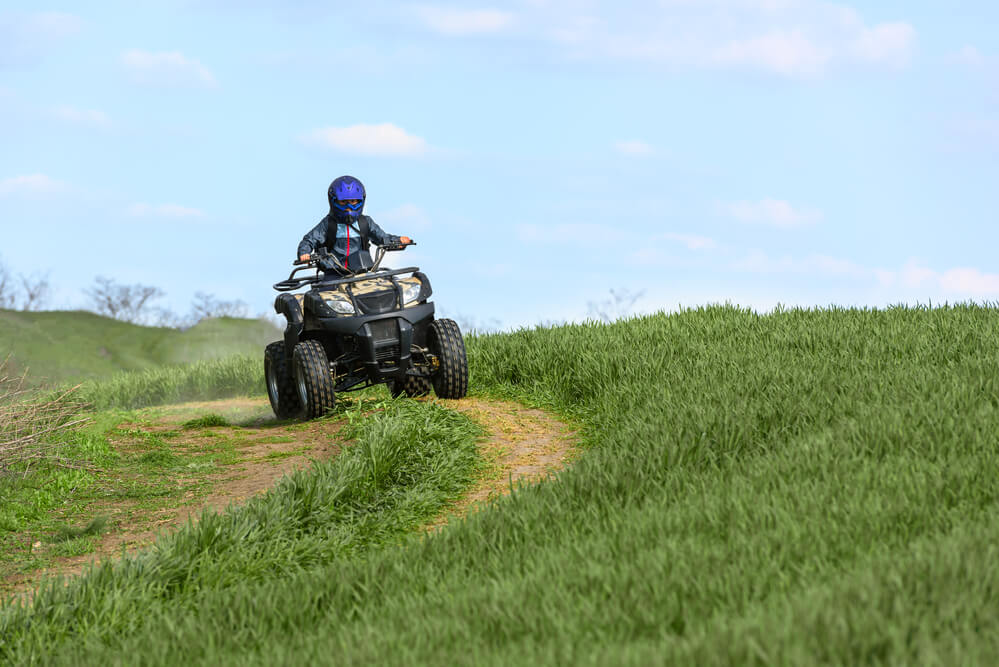
Understanding Controls
It’s crucial for beginners to familiarize themselves with the ATV controls. Before venturing out on a ride, take time to read the owner’s manual and understand the various components.
It’s essential to know how to handle the steering, brakes, and throttle. ATV steering is different from a car as it involves shifting body weight and using handlebars. Brakes can be hand-operated or foot-operated, depending on your ATV model.
Make sure to locate and understand the usage of both front and rear brakes.
Riding Techniques
When it comes to riding techniques, the All-Terrain Vehicle Safety Institute (ASI) recommends a few guidelines for all riders. First, it’s essential to practice proper posture. Sit upright and slightly forward, with your feet on the footrests and your elbows slightly bent.
Gripping the handlebars firmly helps with maintaining steady control.
Next, let’s focus on turning. When turning the ATV, it’s necessary to shift your body weight into the turn. This helps in maintaining your balance and provides stability. Now, let’s discuss steering.
To steer effectively, gently push the handlebar in the direction you want to turn and lean your body weight into the turn. It’s important not to over-steer or make sudden movements potentially causing a roll-over.
Lastly, ensure you are comfortable with using the ATV’s brakes. Practice applying brakes gradually and getting a feel for how quickly the ATV comes to a stop.
Familiarize yourself with using both front and rear brakes in various situations so that you can react promptly in case of an emergency.
By following these essentials and continually practicing safe riding techniques, you’ll find yourself enjoying the thrilling world of ATV riding without any unnecessary risks.
ATV Maintenance
Pre-ride Inspection
I always start with a pre-ride inspection to make sure everything on my ATV is working properly. It’s crucial to check tires for any visible damages, proper air pressure, and wear. If they’re low, I inflate them to the manufacturer’s recommended psi.
Next, I examine the chain to ensure it’s in good condition and has proper tension. For smooth operation, I apply lubrication regularly to avoid friction and wear on the sprockets. It’s important not to forget about the oil and coolant levels.
I ensure they’re at the right levels and the oil is free from any debris.
Here’s my quick checklist for pre-ride inspection:
- Tires: Pressure and wear
- Chain: Condition and tension
- Lubrication: Chain and sprockets
- Oil and coolant levels: Check and refill
Post-ride Care
After having a great ride, I take some time to give my ATV proper post-ride care. It’s essential to keep the ATV clean, so I remove any dirt, mud, or debris accumulated during the ride.
I wash it gently using a low-pressure hose and specially designed ATV cleaner.
I always remember to keep an eye on my ATV’s fuel efficiency. To improve performance and reduce the chances of issues, I refuel with the recommended octane rating by the manufacturer.
Keeping my fuel fresh and using a fuel stabilizer, especially during storage periods, helps to avoid future complications.
Lastly, reviewing my ATV’s owner’s manual is something I do regularly. It’s filled with valuable information about maintenance schedules and detailed instructions on taking care of every component.
So, to sum up, my post-ride routine includes:
- Cleaning: Remove dirt and debris with a low-pressure hose
- Fuel: Use the recommended octane rating and a stabilizer when needed
- Refer to the owner’s manual: follow maintenance schedules and guidelines
Following these maintenance tips will help keep my ATV in excellent condition and ensure my safety while enjoying the thrill of the ride.
Safe Riding Practices
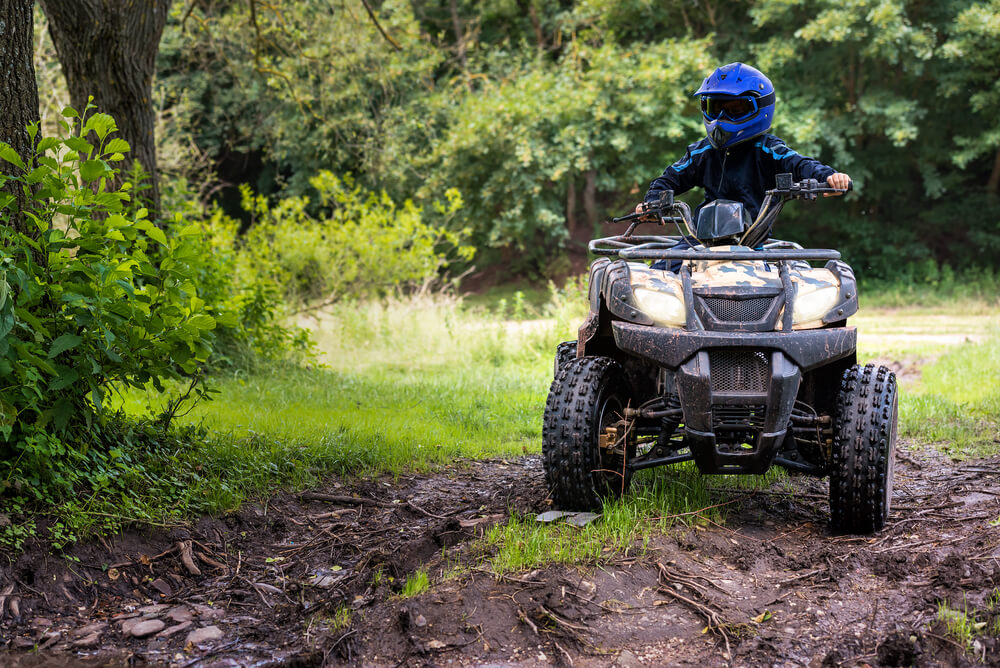
As a beginner in ATV riding, I know it can be both exciting and intimidating. So, it’s important to learn and practice safe riding techniques to prevent injuries and make the experience enjoyable.
Let me share some essential tips I’ve learned for riding an ATV safely, especially in off-road terrains.
First, always wear the proper safety gear. This includes a helmet, goggles, gloves, long pants, long sleeves, and over-the-ankle boots. Protective clothing not only prevents injuries but also offers comfort while riding.
Trust me, I’ve seen how important it is to be prepared.
Next, make sure you’re riding an ATV that’s appropriate for your size and weight. This allows for better control and maneuverability. For instance, I wouldn’t ride an adult-sized ATV as a smaller person or a youth-sized ATV if I’m a taller adult.
It’s crucial to remember that an ill-fitted ATV makes it more difficult to handle different terrains.
Further, it’s essential to be aware of your surroundings and maintain good visibility. Knowing the terrain you’re riding on helps you make better decisions about speed and riding techniques.
For me, navigating unfamiliar trails can be challenging, so I always slow down and pay attention to my environment.
When it comes to riding techniques, one tip I’ve found helpful is to shift my weight accordingly. For example, when I’m climbing hills, I lean forward to help maintain balance. During downhill rides, I lean back to keep the ATV stable.
Practice shifting your weight to improve your overall riding experience.
Finally, never underestimate the importance of controlling your speed. High speeds can lead to injuries and accidents, especially for beginners. In my experience, it’s best to start slow, gradually increasing the speed as you become more comfortable and confident as an ATV rider.
Overall, following these safe riding practices should make your off-road adventures more enjoyable.
Legal Considerations
Before I hit the trails on my ATV, I always make sure to be aware of the legal considerations and follow the laws and regulations related to ATV usage. While these can vary by country, state, and even local municipality, there are some general rules to keep in mind.
First and foremost, I abide by the ATV laws stated by the governing authorities in my area. This might include specific rules regarding age restrictions, licensing requirements, and safety equipment.
It’s also essential to check if these rules apply to both private property and public lands.
When it comes to riding on paved roads, I understand that using an ATV on a public road is generally not permitted, except in limited situations, like crossing a road, if allowed by local regulations.
I may need to look up local ordinances to determine any restrictions or requirements for crossing roads.
I never forget about the rules of the road while riding my ATV. Just like driving a car, I must follow traffic laws such as signaling turns, obeying speed limits, and yielding the right of way.
It’s also important to note that some places may require ATVs to be registered and display a license plate or identification sticker.
I always respect the land and the environment by staying on designated trails and avoiding sensitive habitats. Additionally, I take care to avoid trespassing on private property without obtaining permission from the landowner.
Being aware of and following the laws and regulations around ATV use is necessary for a safe and responsible ride.
It’s a good idea for me (and for you, fellow beginners!) to take the time to do some research on the legal considerations before heading out for a ride.
ATV Safety for Kids
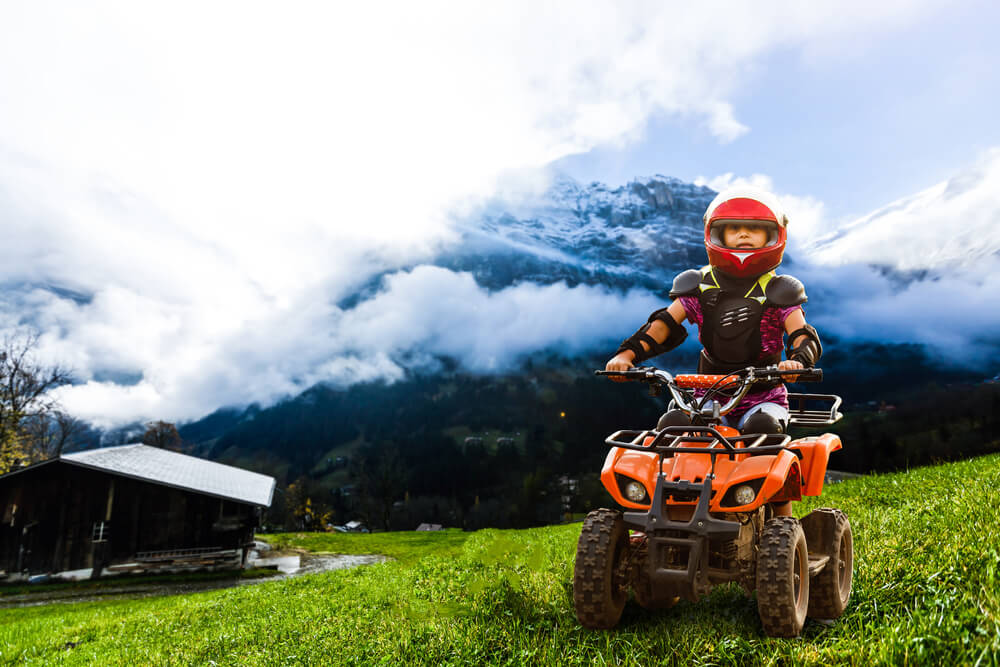
As a responsible parent, I put safety above all else, especially when it comes to my children riding all-terrain vehicles (ATVs). Whether it’s our first time or we’ve been doing it for years, there are a few essential tips that I always keep in mind.
First and foremost, I ensure that my children are wearing the proper safety gear. ATVs are incredibly powerful machines and can become dangerous if precautions aren’t taken.
I always have my kids wear a sturdy helmet with a face shield or goggles, long-sleeved shirts, long pants, gloves, and over-the-ankle boots to protect them from any potential hazards they may encounter while riding.
In addition to safety gear, I choose age-appropriate ATVs for my youngsters. Since ATVs vary in size, engine power, and overall design, it’s crucial to select an ATV that fits my child’s abilities.
I always carefully consult the manufacturer’s guidelines for recommended age ranges and size requirements for each ATV.
Before setting our little adventurers loose on their ATVs, I make sure they know the basics of operating the vehicle. We go over braking, accelerating, and steering, as well as managing their body weight while maneuvering turns.
Practice makes perfect, so I give them plenty of opportunities to ride in controlled environments before tackling more challenging terrains.
One important aspect of ATV safety for kids that cannot be overlooked is supervision. I always keep a watchful eye on my children when they’re riding and never let them venture off on their own.
This helps me ensure that they’re safe while also providing guidance and support as needed.
Finally, I educate my youngsters about the importance of respecting their surroundings when riding ATVs. From respecting private property to maintaining a safe distance from other outdoor enthusiasts, we review the rules of the trail to create a harmonious environment for everyone to enjoy their respective outdoor activities.
Keeping these essential tips in mind can ensure my children have a great time exploring the outdoors on ATVs while also staying safe.
ATV Safety Training Courses
I highly recommend taking ATV safety training courses, especially for beginners. The ATV Safety Institute (ASI) offers great courses that teach you important skills and knowledge for operating ATVs safely.
Taking an ATV safety course benefits me, as well as other riders and even non-riders whom I might encounter on trails.
The ASI’s safety course covers various topics, such as pre-ride inspection, basic riding techniques, and proper trail etiquette. The instructors are well-trained professionals who guide riders through a hands-on learning experience.
The tips and practice guides provided by the ASI in their course materials serve as invaluable resources for novice ATV riders.
One of the things I appreciate the most about these courses is the emphasis on understanding and respecting an ATV’s capabilities and limitations. I learned how to anticipate and react to different riding situations, which made my riding experience safer and more enjoyable.
Aside from the formal courses, I also enjoy participating in practice sessions arranged by the ATV Safety Institute. These practice sessions help reinforce the skills I learned in class and allow me to feel more confident in my ATV.
Accidents and Injuries
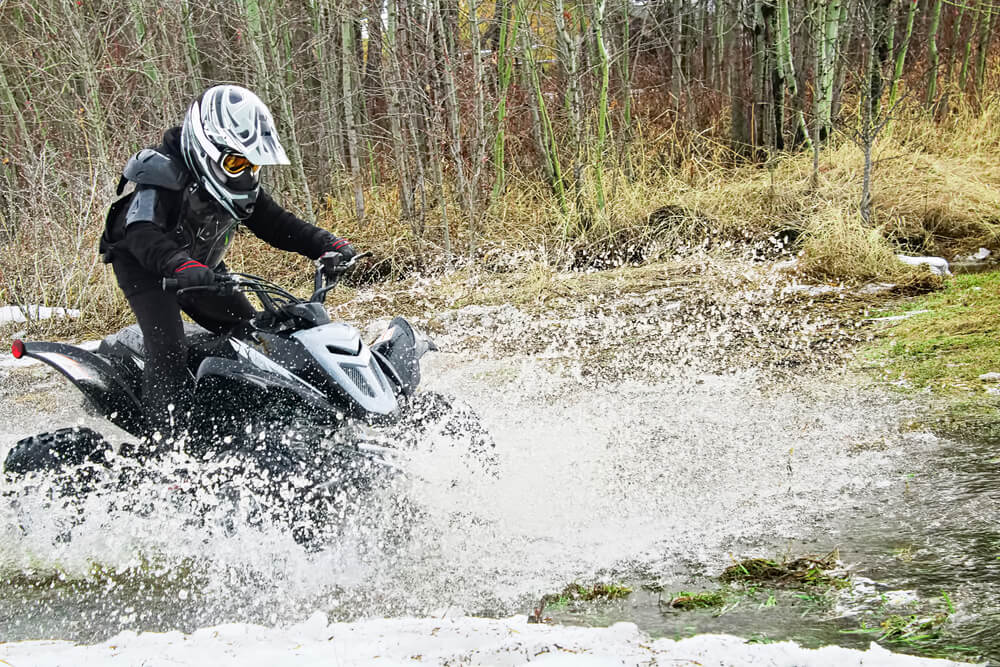
As a beginner, it’s important to be aware of the potential accidents and injuries that can occur while riding an ATV. I want to share some essential information on this topic to help you stay safe and enjoy your off-roading experience.
Firstly, accidents can happen to anyone, no matter how experienced or cautious you are. The most common type of accident is a rollover, which can be caused by uneven terrain, excessive speed, or sudden changes in direction.
When this happens, there’s a high risk of being injured, especially if you’re not wearing the proper protective gear. In case of an accident, it’s always a good idea to have insurance coverage to help cover the costs of medical treatment and possible damages to your vehicle or others.
Injuries sustained while riding an ATV can range from minor cuts and bruises to more serious conditions like broken bones, internal injuries, or even a traumatic brain injury.
To minimize the risk of injury, I always prioritize wearing the right safety gear, such as a helmet, goggles, gloves, and boots. Additionally, investing in chest protectors and knee pads can provide extra protection for your body against impacts.
Being injured can not only affect your physical health but also significantly impact your finances. Medical bills, loss of income during recovery, and increased insurance premiums are just a few of the potential costs you may face.
Keep this in mind as another reason to prioritize safety while enjoying your ATV.
By understanding the risks of accidents and injuries and taking the appropriate precautions, I believe that off-roading on ATVs can be a thrilling and safe experience for beginners.
Stay cautious, wear the right gear, and have fun out there!
Conclusion
As a beginner on ATVs, I found that following these essential safety tips has improved my overall experience and reduced the potential risks that come with riding. By adhering to the speed limits, wearing the proper gear, and consistently practicing the correct techniques, I’m able to have a safe and enjoyable time on my ATV.
Being aware of my surroundings and understanding the terrain are crucial elements during my rides. This awareness has helped me make better decisions, avoid hazards, and share the space with other riders.
Furthermore, keeping up with regular maintenance and inspections on my ATV has made a huge difference in the performance and safety of the vehicle, ensuring that everything is in proper working order before hitting the trails.
In conclusion, as a beginner ATV rider, by adhering to these essential safety tips and guidelines, I am more confident in my ability to enjoy my ATV experience while minimizing the risks.
Frequently Asked Questions
What safety gear should be worn while riding an ATV?
When riding an ATV, it’s crucial to wear proper safety gear. I always recommend wearing a helmet, goggles, gloves, long sleeves, long pants, and over-the-ankle boots. A chest protector and knee guards are also good additions to keep you protected while enjoying the ride.
How can a beginner properly maintain their ATV?
Proper ATV maintenance is essential for a safe riding experience. As a beginner, I suggest checking the owner’s manual for specific maintenance procedures for your ATV model.
Regularly change the oil, clean the air filter, and inspect the tires for wear and proper pressure. Additionally, ensure your ATV’s chain is well-lubricated and adjusted, and always check the brakes.
What are important pre-ride checks to perform on an ATV?
Before every ride, it’s a good idea to perform a quick inspection of your ATV. I make sure to check the tire pressure and condition, control cables, nuts and bolts, oil and fuel levels, and the condition of the brakes.
These are essential steps to ensure the ATV is in good working order and safe to ride.
How can riders safely navigate corners on a quad bike?
Navigating corners on a quad bike requires some practice and skill. To safely take a corner, I recommend slowing down, leaning your body into the turn while keeping your feet firmly on the footrests, and gently accelerating as you exit the corner.
Take time to practice cornering in a controlled environment, like an open field or flat track, before attempting more challenging terrain.
What are some essential tips for responsible ATV operation?
Responsible ATV operation involves respecting the environment, knowing your own skill level, and being aware of local laws and regulations. Some suggestions I have are: ride only on designated trails, avoid disturbing wildlife, keep noise levels to a minimum, and always ride with a buddy for added safety.
Don’t forget to let others know your riding plans and estimated return time as a precaution.
Are there training resources for learning safe ATV riding?
Yes, there are a variety of helpful resources for learning safe ATV riding. The ATV Safety Institute (ASI) offers an online e-course and hands-on ATV RiderCourse.
Additionally, many local clubs and organizations provide training courses to improve riding skills. I suggest checking with your local ATV dealer or off-road community for more information on training opportunities near you.
